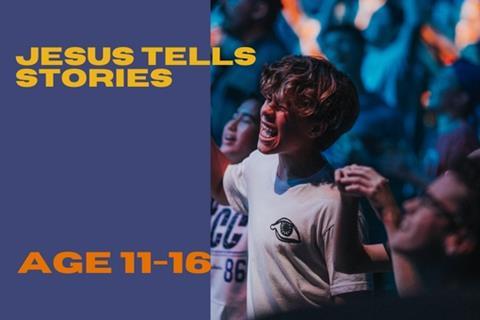
BACKGROUND
This is a well-known passage, but there may well be people in the group who have never heard it. As you prepare, try to approach this story as if you have never read it. And when you get to the session, ask everyone to do the same. The power of this story can be dulled by our familiarity with it, and we can lose the shocking nature of many aspects of what Jesus says. Try to bring this story of grace, forgiveness and new revelations about God to life for your group.
GATHERING TIME
10 minutes
You will need: refreshments; a comfortable place to sit and chat
As the young people arrive, serve them the refreshments you have provided. Could someone in your congregation make cake? Could you provide healthy snacks?
As you eat and drink together, go around the group with each person sharing two positive things from their past week and two things that didn’t go so well or that they are unhappy about.
INTRODUCTORY DISCUSSION
10 minutes
Invite the group to think of all the things they hate (keep it light-hearted). Ask them these questions:
- What would be the worst place to go for dinner?
- What would be your worst?
- What would be the worst thing your sibling (or other relative, if anyone in your group is an only child) could do to you?
- What would you find most difficult to forgive?
After each question, compare everyone’s answers and decide who in the group has given the ‘best’ answer. What would happen if two or three of these things were true for you? How easy would it be to put up with them? What would you do to change things?
BIBLE EXPLORATION
10 minutes
You will need: Bibles; paper; art materials
Break the group up into pairs or threes. Try to pair those who are good artists (or who at least like drawing) with those who are less keen. Challenge the small groups to read through the story of the lost son from Luke 15:11-32 and pick out the six main events that happen in this story.
The pairs should then create a cartoon strip with six frames, each with one of the main events the young people have identified. Those who are less keen on drawing could write the text to go with the frames. As the groups are working, circulate around them and chat about what they have chosen to depict and why.
Once everyone has finished, compare the cartoon strips and discuss the differences between them. Ask the pairs or threes to share why they chose those events from the story.
Hand out paper and pens. Using one of the cartoon strips, ask the young people to think about what each key character (the younger son, the father and the older son) might be thinking or feeling for each frame. Ask them to write down one word for how that character felt. On the count of three, get everyone to reveal their word. Chat about why the young people chose those words.
CHATTING TOGETHER
10 minutes
Ask the group these questions, making sure everyone has the chance to contribute:
- Has anyone had an experience of going away from God (and coming back to him)?
- When was the last time you got lost? How did you feel when you got back home?
- What parallels can you draw between how you felt when you were lost and how the father in the story felt?
- And how God feels about his lost children?
- How do you feel about knowing the God views you the way the father in the story viewed the return of his lost son?
You will need: playdough or homemade salt dough (you can find recipes online, or ask your colleagues who work with under-5s!)
Give each young person a lump of playdough and give them time to make a shape or object that represents what they feel God is saying to them or that illustrates something that stood out for them from the story. As you work together, chat about the story and what they have discovered about God. Give them space to ask you any questions about the story that they’re not clear about.
Go around the circle and ask each person to explain what their object means or represents. If they would like to, encourage the young people to take their models home at the end of the session as a reminder of what they have discovered today. Say that every time they look at the model, they should recall the story and talk to God about the story they have explored. If they like, they could read the story again during the week to explore it some more.
PRAYER
10 minutes
You will need: models from ‘Creative response’
Ask each person to hand their object to the person on their right. Spend two minutes using the object as a focus to pray for the person who made it. If you have time, do the same for the person on their left. Remember to return the models to their maker so they can take them home at the end of the session.






































